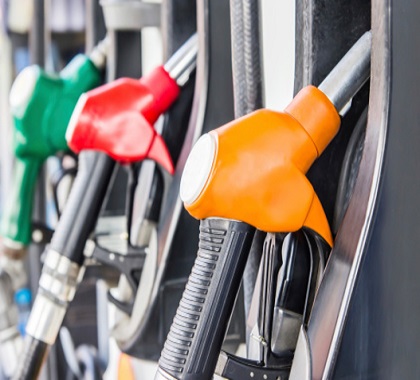Ohio lawmakers are now considering several legislative proposals that would increase the state’s motor-fuel tax rates. The initial proposed tax hike from Gov. Mike DeWine’s $7.4 billion, two-year transportation budget would increase the state gas tax from 28 cents per gallon to 46 cents. If adopted, the rate increase would move Ohio from the state with the 29th highest gas tax to the fifth highest. The new rate would go into effect July 1 and increase with inflation each year, beginning in July 2020.
The budget estimates the new tax would raise an estimated $1.2 billion a year, with $480 million going to local government projects.
Tying any tax rate to a commodity price or the Consumer Price Index (CPI), which is calculated by the U.S. Bureau of Labor Statistics, would be problematic and make politicians and regulators less accountable when tax changes occur. Even worse, because the cost of transportation is one of the measures used in calculating the CPI, indexing the gas tax would contribute to higher prices by placing upward pressure on the very measures used to determine the tax rate.
Both houses of the legislature made severe cuts to DeWine’s proposed hikes. The House proposal reduced the planned gas tax hike to 10.7 cents per gallon, which would be phased in over two years. The House plan would commence with a 7-cent increase on October 1.
The House proposal would also dramatically increase the diesel tax, which would ultimately rise by 20 cents over a three-year period, and it would eliminate DeWine’s proposed $200 fee on electric vehicles and $100 fee on hybrids. (It would not index the rate in the future.)
The Senate version of the proposal would cut DeWine’s proposed rates even further while also equalizing the gas and diesel rates. This version would increase the tax rate by 6 cents per gallon. The Senate proposal would create an estimated $872 million per year in new tax revenue.
Increasing the gas tax will simply result in the same revenue issues as fuel efficiency and electric, hybrid car usage continues to increase. The rise of fuel-efficient cars has decreased motor-fuel tax coffers and disproportionately shifted the transportation tax burden to low-income drivers, a group that typically owns older, less-fuel-efficient vehicles. In several states, the gas tax has become increasing inefficient, with revenue falling far short of estimated goals; this has left a deficit that legislatures are struggling to fill. Increasing what has proven to be a failing tax is not the answer.
In 2015, Daniel Vock, writing for Governing, analyzed state gas tax data reported to the U.S. Census Bureau and found two-thirds of state fuel taxes failed to keep up with inflation, leading to dramatic reductions in fuel-tax-related revenue.
Wendell Cox and Ronald Utt argue gas taxes have a significantly greater detrimental effect on lower- and middle-income families than they do on the wealthy, and Americans for Prosperity estimates lower gas prices amount to approximately $100 in additional spendable income per month for an average family.
Even worse, a tax hike would raise prices on goods and services throughout the economy, because virtually all consumer goods are transported using gasoline-powered vehicles. In fact, nearly 70 percent of all freight transported annually in the United States, accounting for manufactured and retail goods worth $671 billion, is transported by truck, according to Truckinfo.net. Businesses will simply pass these added costs on to consumers.
Instead of raising taxes, Ohio legislators should explore modern and efficient ways to fund road construction and traffic infrastructure, such as privatizing roads and establishing toll systems. Switching to an all-electronic tolling system would be a cost-effective way to generate revenue while providing a fairer system for taxpayers. Electronic tolling would also remove much of the administrative bloat created by older systems that relied on toll operators.
Creating more tolls would also address many of the new problems created by the greater number of fuel-efficient and electric vehicles on America’s roadways. Gas-powered and electric cars pay the same toll rates, which means lawmakers wouldn’t need to impose a separate fee for electric cars to make up for the disparity created by a gas tax.
According to the Reason Foundation, all-electronic tolling (AET) has already demonstrated that its collection costs are match or exceed gas tax revenues. Reason found that the net collection costs of an AET operation is roughly 5 percent of the revenue collected for a $5 toll, or about 8 percent for a $2 toll.
One reform that merits consideration is limiting the use of gas tax dollars to transportation projects. Wasteful spending is an issue that has long plagued transportation funding. Bloat, inflated labor costs through prevailing wage laws and project labor agreements, and inefficient bureaucratic agencies often inflate the cost of new infrastructure projects far above initial estimates.
While the Senate bill is an improvement over DeWine’s original proposal, any gas tax should be offset by tax cuts elsewhere, or else the total tax burden on taxpayers will increase. Ohio should consider, for instance, cutting the state’s income or property tax rates.
The following documents provide additional information about how motor-fuel taxes are applied and the impact they have on state economies.
Dispelling the Myths: Toll and Fuel Tax Collection Costs in the 21st Century
https://reason.org/wp-content/uploads/2012/11/dispelling_toll_and_gas_tax_collection_myths.pdf
In this Reason Foundation Policy Study, Daryl S. Fleming examines all-electronic tolling, its basic operations plan and business model, the principal factors affecting toll collection costs, and a number of reforms states can make to reduce the cost of toll collection.
The Buckeye Institute: Policymakers Must Maintain User-Fee Funding for Infrastructure and Look for Long-Term Solutions
https://www.buckeyeinstitute.org/research/detail/the-buckeye-institute-policymakers-must-maintain-user-fee-funding-for-infrastructure-and-look-for-long-term-solutions
In this article, researchers at The Buckeye Institute respond to calls for increased transportation funding in Ohio by calling for a more sustainable user-fee funding source.
23rd Annual Highway Report on the Performance of State Highway Systems
https://reason.org/wp-content/uploads/2018/01/23rd_annual_highway_report.pdf
In this report, the Reason Foundation ranks the performance of state highway systems in 11 categories, including spending per mile, pavement conditions, deficient bridges, traffic congestion, and fatality rates.
State Motor Fuel Taxes
https://www.api.org/oil-and-natural-gas/consumer-information/motor-fuel-taxes/gasoline-tax
The American Petroleum Institute documents each state’s current motor-fuel taxes (both gasoline and diesel).
Alternatives to the Motor Fuel Tax
https://heartland.org/publications-resources/publications/alternatives-to-the-motor-fuel-tax?source=policybot
This report, prepared by the Center for Urban Studies at Portland State University and submitted to the Oregon Department of Transportation, evaluates potential alternatives to motor-fuel taxes. The report also identifies the economic and technological problems that must be addressed when designing alternative revenue sources.
Designing Alternatives to State Motor Fuel Taxes
https://heartland.org/publications-resources/publications/designing-alternatives-to-state–motor-fuel-taxes?source=policybot
Writing in Transportation Quarterly, Anthony M. Rufolo and Robert L. Bertini consider the future of motor-fuel taxes in world in which more fuel-efficient vehicles are rapidly becoming available. They also report on the economic effects of road pricing as a substitute for fuel taxes.
Paying at the Pump: Gasoline Taxes in America
http://taxfoundation.org/article/paying-pump-gasoline-taxes-america
In this paper from the Tax Foundation, Jonathan Williams argues gas taxes can be an effective means of funding transportation improvements. In many cases, however, governments exploit the taxes for political reasons, spending them on projects unrelated to roads and other transportation projects.
Research & Commentary: Congestion Traffic Pricing
https://heartland.org/publications-resources/publications/research–commentary-congestion-traffic-pricing?source=policybot
Congestion pricing, an alternative to gasoline taxes, uses market principles to address traffic congestion. Under a congestion pricing model, road operators charge a variable price based on congestion, thereby managing demand and limiting congestion. Heartland Senior Policy Analyst Matthew Glans examines several proposals for implementing pricing systems to alleviate traffic congestion.
Raising Gas Taxes Won’t Fix Our Bridges
https://reason.org/wp-content/uploads/2007/10/59f2e045a676b9c69bb9139b2c217bf3.pdf
In the aftermath of the I-35 bridge collapse in Minneapolis, Minnesota, Adrian Moore of the Reason Foundation argues increasing fuel taxes should not be the only response to state transportation funding problems. Moore wrote, “First we must examine how we spend transportation dollars now. Then we maximize the value out of those dollars. Finally, the last step is to address the need for additional revenue.”
Nothing in this Research & Commentary is intended to influence the passage of legislation, and it does not necessarily represent the views of The Heartland Institute. For further information on this and other topics, visit the Budget & Tax News website, The Heartland Institute’s website, and PolicyBot, Heartland’s free online research database.
The Heartland Institute can send an expert to your state to testify or brief your caucus; host an event in your state, or send you further information on a topic. Please don’t hesitate to contact us if we can be of assistance! If you have any questions or comments, contact Lindsey Stroud, a state government relations manager at The Heartland Institute, at [email protected] or 757/354-8170.




